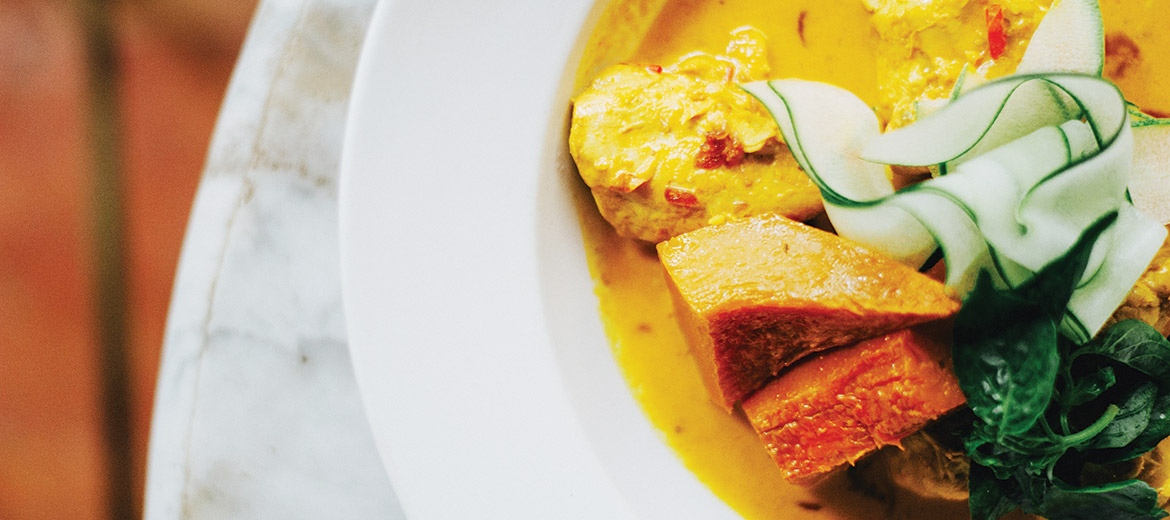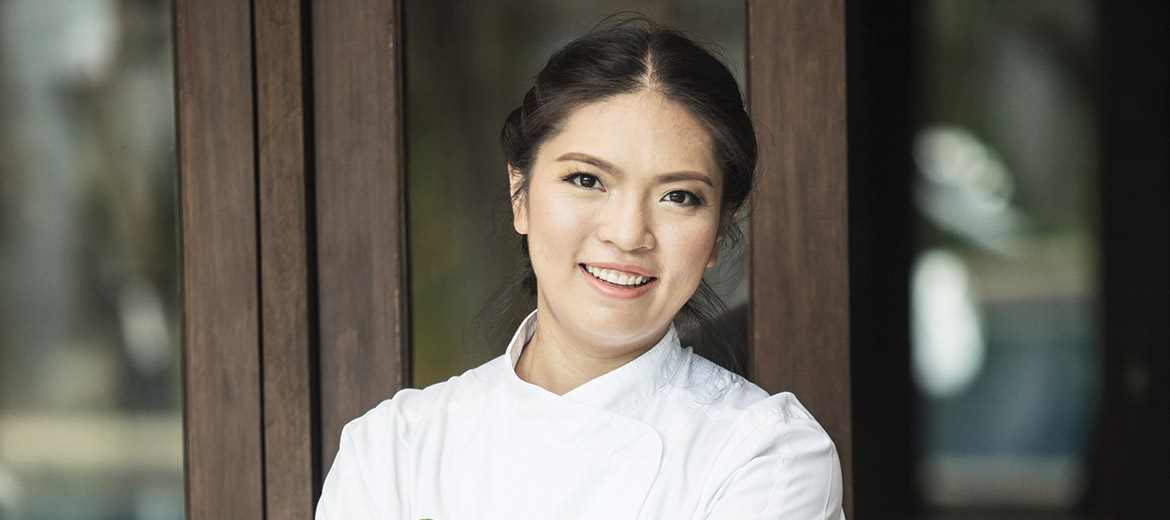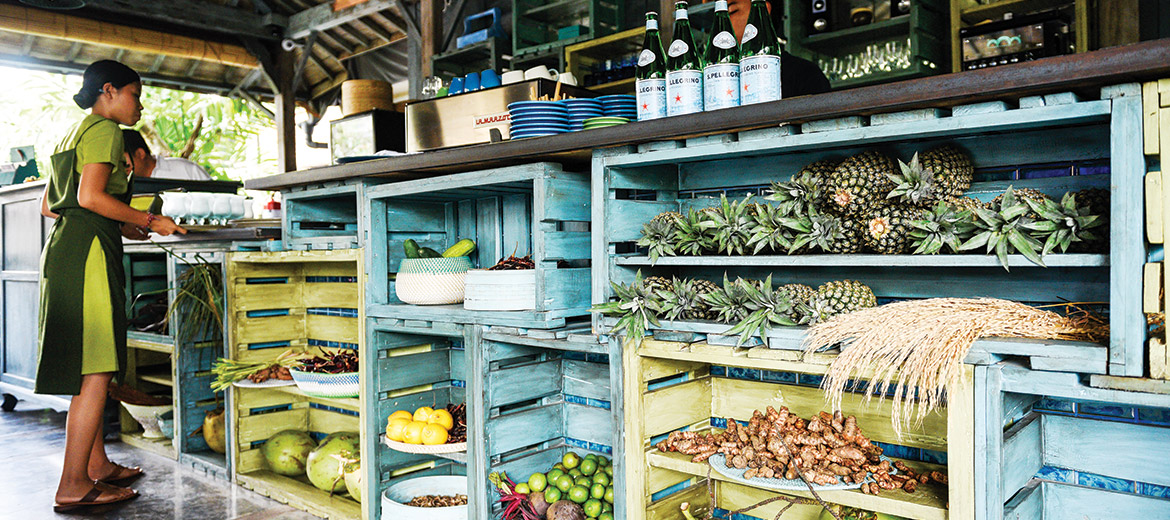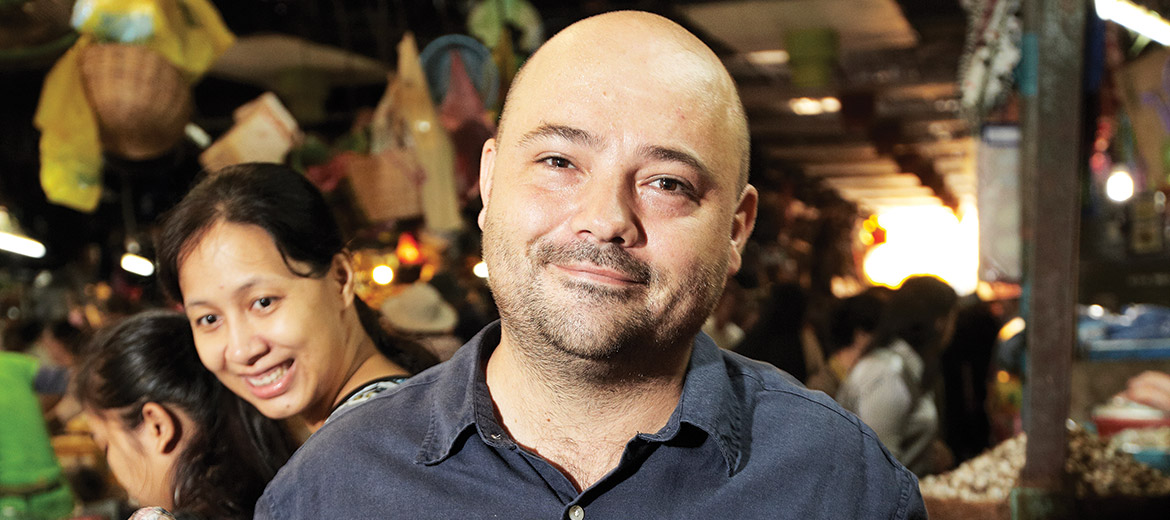This article was published in the July edition of Southeast Asia Globe magazine. For full access, subscribe here.
Next time you dive into the plump prawns and crunchy beansprouts of a pad Thai and self-administer a pat on the back for indulging in a meal that symbolises Thai cooking, think again. For the dish, beloved of backpackers and `Thai’ food trucks from Los Angeles to Lisbon, has very little to do with Thai culinary tradition.
The precise beginnings of kway teow pad Thai, to give it its full name, are debated. It is undoubtedly Chinese in origin – `kway teow’, which means `rice noodles’ in Chinese, is testament to that. Some claim it was the product of a competition held by the Thai government in the 1940s to create a new national dish; others say it was introduced systematically by that same government as part of a `modernisation’ drive that also included changing the country’s name from Siam to Thailand and banning local dialects in schools. Loaded with beansprouts, vegetables and protein, pad Thai represented a cheap, nutritious dinner at a time when financial hardship gripped the country and the staple meal consisted of plain rice with chilli paste.
Whatever pad Thai’s provenance, each time we shovel down a steaming plateful, we are, in fact, tucking into the results of a government initiative. Of course, this doesn’t stop thousands of people across the world from eating pad Thai every day. In the past decade or two, Thai food has become ubiquitous. It seems no self≠respecting urban centre in the Western world is without at least one Thai restaurant, if not dozens.
In recent years, Vietnamese cuisine has also emerged as a new darling of the global food scene. Yet many of Southeast Asia’s tastiest cuisines are still languishing in global obscurity. Malaysia, Indonesia, the Philippines, Cambodia, Myanmar – all have looked on while their neighbours have become culinary titans.
“A `buzz’ about a cuisine doesn’t just emanate from flavours but rather through marketing tactics – calling attention to a cuisine is basically a marketing and branding process and not an innately culinary one,” said Martin F. Manalansan, head of the University of Illinois’s Department of Asian-American Studies and an editor of the book Eating Asian America.

There are many factors that need to align for a cuisine to `go global’, from economics and migration to changing global tastes. “Immigration from and tourism in these two countries [Thailand and Vietnam] spurred the globalised flows of the cuisine. In America, restaurant businesses were one of the main economic lifelines for immigrants from these two countries,” Manalansan wrote in an email.
However, according to almost every expert and chef Southeast Asia Globe spoke to at May’s Ubud Food Festival in Bali, the single largest contributor to creating an international appetite for a country’s cuisine is the government.
“It’s not something that happens overnight, or even over a few years,” said Joannès Rivière, chef-owner of Cuisine Wat Damnak, the only restaurant in Cambodia to have been on the Asia’s 50 Best Restaurants list. “The Thai people, apparently they’re paying the Michelin guide to come into Bangkok… They’re going to do it because they have that government will, which is what it takes to make the cuisine go global.”
As pleasant as it might be to imagine, Thai cuisine did not spread worldwide due to flavours such as the thrilling, spicy-sour combination of kaffir lime leaves and chilli found in tom yum goong. Instead, it was the result of a concerted diplomatic and commercial campaign.
Duangporn `Bo’ Songvisava is one half of the husband-and-wife team behind Bo.lan, the Bangkok eatery that the Guardian‘s food critic described as “probably the finest Thai restaurant I’ve eaten in anywhere”.
“Thailand’s been pushing forever,” Songvisava said on the question of why her country’s cuisine has conquered the world. “Not in the direction that I like to see but, in terms of creating advantages for our food, making people like our food, they’ve done a really good job.”

“How has Thai food done so well? It’s the government,” agreed her husband and fellow chef Dylan Jones. “The government’s policies have been very strong for the past 60 years and heavily promoted Thai food abroad, heavily supported through their tourism boards in each country.”
For decades, the Thai government’s moves have been backed by a huge, and ever growing, commercial food industry. The production of everything from curry pastes to canned fruit has long been big business in Thailand, making it even more lucrative for the government to push Thai food overseas. Every country that developed a taste for Thai became a new export market for its processed produce.
Thailand is currently the only net food exporter in Asia, according to the National Food Institute, a Thai government agency. The country’s food exports are worth approximately $27 billion a year, placing it 13th on the list of the world’s largest food exporters, according to the Institute’s most recent figures. It’s aiming to crack the top ten and increase food exports to $63 billion within a decade.
In order for other Southeast Asian nations to follow suit they must, first of all, know what they’re trying to market. It is not uncommon, in certain circles, to be scolded for referring to ‘Indonesian cuisine’. “There’s no such thing,” comes the familiar refrain, before a lesson is disseminated on the vast difference between foods from Aceh and Sulawesi or on Balinese versus Padang cuisine.
Numerous voices at the festival, however, posited that, in order to come up with an easily marketable product, such regional variations might need to be set aside.
“Because Indonesian food is so diverse, you have to pick one or two, maximum would be three [dishes], to promote it. The next step is you have to make it look appetising. Usually the uglier and messier a food is, the tastier it is. But that’s no good in pictures [when promoting a cuisine],” said Rinrin Marinka, a renowned chef and a judge on Masterchef Indonesia.

Rivière pinpoints similar issues in Cambodia. “The food that tourists get is just an ersatz of Cambodian food mixed up with Thai and Vietnamese to make sure people like it… I think it really depends on one [key] guy who decides: we’ll have good food, we’ll have proper guidelines and we cannot do this, cannot do that,” he said. “Cambodians are not stupid. They know when it’s dry and overcooked and full of MSG. And they also know when it’s done well.”
Once a potentially marketable cuisine has been settled upon, political will returns to the fore. Will Meyrick has lived in Indonesia for 15 years and become one of the country’s most successful chefs. As the man behind seven restaurants, including Mama San, a successful chain with outlets in Bali, Kuala Lumpur and Hong Kong, he has also been sought out by Indonesia’s government for advice on spreading the country’s cuisine worldwide.
“I had a meeting with the minister of tourism, a one-on-one meeting, with him asking me how we take Indonesian food out there. What I said to them was: `The first thing is that you’ve actually got to get behind it. You don’t actually support any festivals. You try and create your own festivals, but without the right people.’
“What I suggested with Janet [DeNeefe, founder of the Ubud Food Festival], and what I talked to the minister about, is: `Why don’t you set up a satellite festival that goes around France and the UK and Holland and Indonesia – and don’t make it just about Indonesians doing it, make it about the food leaders of the country?’”
Even the Thais – notoriously protective of their cuisine – are beginning to come around to `outsiders’ cooking their food thanks to the worldwide acclaim lavished on restaurants and chefs such as Australian David Thompson at Nahm, said Meyrick, noting that chefs like Eelke Plasmeijer of Locavore in Bali, which ranked 22nd on this year’s Asia’s 50 Best Restaurants list, could act as food diplomats for Indonesia.
“[P]ut a mixed bag together with some Indonesians, some expats, then you’ll get a better sample,” he said. “Food, ultimately, isn’t about race, it isn’t about where you’re from, it’s about the ingredients from that area.”
There is a sense that now might be the perfect time for astute food marketing from the likes of Indonesia or Malaysia – leveraging the recent explosion in `foodie’ culture could certainly be a smart way forward, particularly for the region’s least-exposed cuisines, such as Myanmar or Cambodian. In the US, Manalansan, the author and academic, has noticed that food from the Philippines seems to finally be getting its season in the sun.

“Filipino cuisine, which has been around in America for years, is being `Columbused’, meaning all of a sudden mainstream media has `discovered’ it. I mean this in very ironic terms. Part of this is the rise of foodie culture – amateur food connoisseurs who are always on the prowl for something new, exciting and exotic,” he said.
“People are no longer looking for commercial food, so it gives opportunity for people to do niche, which then becomes boutique, which then becomes popular, which then becomes a trend,” said Meyrick. “I think if the government of Indonesia gave Indonesians funds to set up a restaurant in London, in a prime spot in the middle of a world capital, then you can expose that. The Thais do that, but the Indonesians don’t and the Cambodians won’t do it. They still don’t see food as a major industry.”
If there is a positive to certain regional cuisines not yet achieving world domination, it’s that they can still learn from those that have. Thailand’s long-term, systematic approach has been an unqualified economic success, but Songvisava said that a detrimental offshoot has been the watering down of her country’s cuisine.
“[Thai people] try to be too well-mannered. If we put something down, we have to make sure that [people] can eat it. So we make it less spicy, we don’t put too much shrimp paste in,” she said. “But I think today’s people are changing, they’re not that closed-minded anymore. They want to try different things. They’re ready to eat stinky, bad-smelling food from anywhere in the world. So Indonesia, Cambodia, they don’t have to be scared, I think.
“They can showcase the real Indonesian food. So that the world doesn’t have to come across bad Indonesian food, like they would have to come across bad Thai food… [When a cuisine goes global] it does lose some of its heart. It does, because you have to make it in such mass quantities. It doesn’t have to be that way. I don’t want Thai food to be Pizza Hut.”
It takes a while to process the idea that a cuisine becoming a global success is not necessarily a good thing. And it is, perhaps, easier to adopt such a position when your food has already gone global and has tasted a level of success and acceptance that is the envy of a region. Such downsides certainly seemed of little concern to Marinka, Rivière and most other advocates of cuisines yet to bound onto the world stage.
“Of course, as an Indonesian I want my country to be known for something. Not for the corruption, obviously, but for the good things,” Marinka explained. “And one of the good things is the cuisine.”


